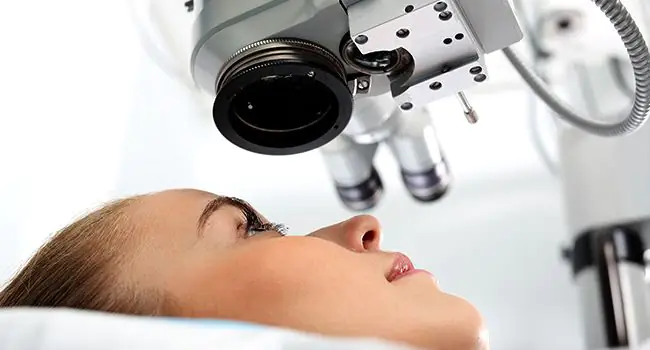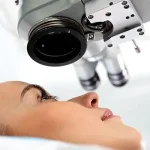Retina, the innermost, thin tissue layer located near the optic nerve, is an important part of our eyes. It receives the light focused by the lens and converts it to a neural impulse that is carried to the brain by the optic nerve.
Retina plays a pivotal role in image processing, and any damage to the retina can lead to permanent blindness. Retinal detachment is one such serious condition where the retina gets detached from the layer that provides it with nourishment and oxygen, thus preventing it from processing light.
If not treated immediately, it can cause permanent damage or vision loss. Retinal detachment is an emergency. One must be aware of early signs of retinal detachment and how to prevent it.
What are the warning signs of a detached retina? Is there any surgical procedure available for treating retinal detachment? How to prevent retinal detachment? In this blog, we answer vital questions related to a detached retina.
Signs of Retinal Detachment
To start with, retinal detachment is painless and can occur without any prior warning. A person may notice a few of these warning signs before it has progressed:
- The sudden appearance of floaters like shadows in the peripheral vision that slowly progress to central vision
- Sudden flashes of light in the eyes (photopsia) progressing from peripheral to central vision.
- Blurred vision with a feeling of a translucent curtain over the affected eye
Types of Retinal Detachment
Here are the major types of retinal detachment:
Rhegmatogenous
This is the most common type of retinal. A retinal tear is seen, which allows the gel-like fluid (vitreous gel) to fill in between the layers of the retina. This results in pushing the retina away from its position.
This type of retinal detachment happens typically due to eye injuries, previous eye surgery, or near-sightedness (myopia).
Tractional
This type of retinal detachment happens when scar tissue grows on the walls of the retina. The scar tissue pulls the retina away from its position.
It happens mostly when blood vessels get damaged due to diabetic retinopathy.
Exudative
It happens when fluid builds up behind the retinal wall, thus pushing the retina away from the desired position. There is no cut, tear, or injury in this type of retinal detachment.
It is caused due to age-related macular degeneration, swelling, or leakage of the blood vessels.
Risk factors for Retinal Detachment
The critical question that needs to be answered is “Who all are at risk of developing this eye condition, and what are the risks associated with it”?
If you have the following eye ailments, you are at a higher risk of developing retinal detachment:
- Myopia or severe near-sightedness
- Scar tissue formation due to diabetic retinopathy
- Age-related Macular Degeneration
- Eye injury
- Previous eye surgeries
- Family history/heredity of retinal detachment
Treatment for Retinal Detachment
A retinal detachment is an ocular emergency and requires urgent medical attention. Here are some of the options for its management:
Photocoagulation (or Laser)
A laser beam is directed towards the retina through the pupil. The laser burns around the retinal tear, which fuses the retina to the underlying tissue.
Cyropexy (or Freezing)
Local anesthesia is administered to sedate the eye. An extreme cold probe is applied by the surgeon to the tear, thus inducing a scar. The scar then fixes the retina to the tissue.
Scleral Buckling
A sponge or piece of silicon is sewed around the white portion of the eye (or the sclera). Photocoagulation or Cyroprexy is used to scar the tissue. The sponge or silicon which is used in the procedure remains permanently attached to the eye.
Pneumatic Retinopexy
This method can be used if the tear to the eye is small and uncomplicated. The retina is frozen using cyroprexy, and a gas bubble is injected into the vitreous cavity.
Slowly the gas bubble absorbs itself, and the retina attaches itself to the original position.
Vitrectomy
Vitreoretinal Surgery is the most common type of surgery done for retinal detachment. The vitreous gel is removed from the eye, and a gas or silicone oil bubble is injected to hold the retina in place. The oil bubble is removed after 6-8 weeks.
How to prevent Retinal Detachment
In most cases, retinal detachment is either hereditary or age-related. Hence, appropriate actions have to be taken to reduce the risks associated with retinal detachments.
Here are major risk mitigation strategies to address retinal detachment:
- Wear safety goggles to prevent eye injuries when you are performing outdoor activities
- Go for a regular eye check-up in case you have a family history of retinal detachment
- Visit the ophthalmologist immediately in case you observe any symptoms of retinal detachment
- Keep a check on diabetes to avoid diabetic retinopathy
Visit an eye doctor in case you observe symptoms of retinal detachment, diabetic retinopathy, etc. Centre for Sight has a team of retina specialists who have extensive experience in performing retinal detachment surgeries.
Set yourself free from Retinal Detachment by visiting Centre for Sight today!
Article: An In-depth Guide To Retinal Detachment
Author: CFS Editorial Team | Feb 20, 2020 | UPDATED 02:40 IST
*The views expressed here are solely those of the author in his private capacity and do not in any way represent the views of Centre for Sight.





